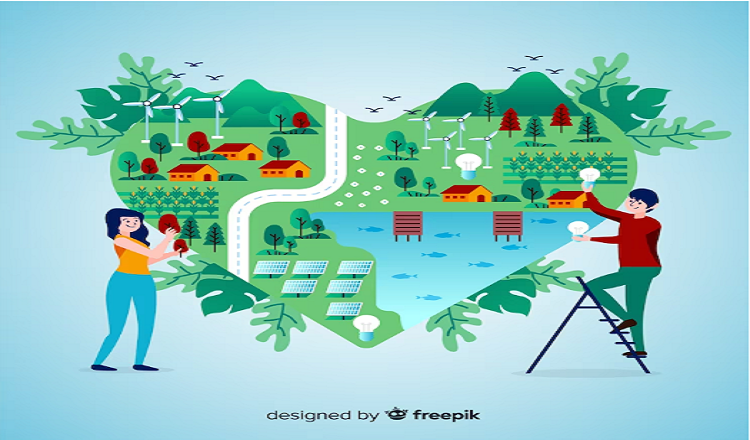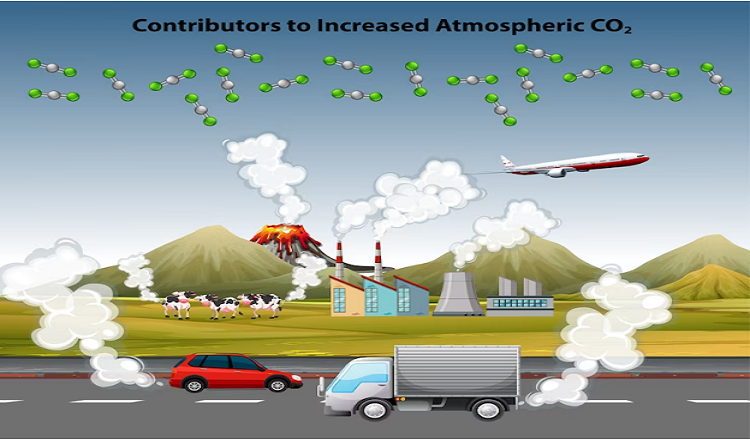Although urbanization—the process by which people move from rural to urban areas—has been happening for ages, it has recently reached previously unheard-of proportions. This tendency is also present in the USA, where daily population growth in urban and suburban areas is increasing. Urbanisation has numerous advantages, including better access to resources and expanded economic opportunities, but it has also had a big influence on the environment. In light of this, it’s critical to consider how urbanisation is hurting our world and what may be done to lessen its adverse consequences.
Environmental problems brought on by urbanisation include air and water pollution, deforestation, biodiversity loss, and climate change. Urban areas frequently encroach into and fragment natural habitats and ecosystems as they grow and expand. These environmental changes have far-reaching repercussions and the potential to have negative effects on both people and the Earth as a whole. Urbanisation poses a serious threat to our natural world, from respiratory ailments brought on by air pollution to the loss of essential ecosystem functions.
This blog will examine how urbanisation has affected the USA’s natural environment and offer advice on how to lessen its detrimental impacts. We will look at the origins and effects of urbanisation and offer doable answers for a more sustainable future using a blend of educational writing and a dash of humour. In doing so, we seek to spread knowledge about this important topic and motivate action in the direction of a planet that is healthier and more vibrant.
Air toxicity
An important environmental problem affecting urban regions in the USA is air pollution. Transportation emissions, industrial processes, and energy generation are some of the factors that contribute to air pollution in metropolitan areas. Additionally, if population density rises as a result of urbanisation, pollution levels may worsen.
There are several ways that air pollution harms both the environment and human health. Heart disease, respiratory ailments, and other health issues can all be brought on by exposure to air pollution. Additionally, it can damage ecosystems and accelerate climate change. Over 40% of Americans, according to the American Lung Association, reside in locations with harmful levels of air pollution.
Urban air pollution has recently been the target of attempts to minimise it, including the introduction of stronger emissions regulations and the promotion of clean energy. To ensure that we may continue to enjoy the numerous advantages of urban living without endangering the environment or our health, however, there is still a lot of work to be done.
Water toxicity
Another big environmental problem affecting metropolitan areas in the USA is water contamination. Sewage overflows, industrial discharges, and runoff from parking lots and roadways are all sources of water contamination in metropolitan areas. These contaminants pose a major risk to both human health and the environment by contaminating rivers, lakes, and groundwater.
Wide-ranging health issues like infections, rashes, and gastrointestinal disorders are just a few of the detrimental effects of water contamination. Water pollution can also impact ecosystems and species, resulting in a fall in biodiversity and a reduction in the availability of resources.
The implementation of green infrastructure, such as rain gardens and bioswales, as well as financial investments in more efficient wastewater treatment systems are two ways that many American towns are addressing the problem of water pollution. For instance, the City of Los Angeles committed over $2 billion to repair its sewer system to minimise sewage overflows, while New York City executed a $1.5 billion plan to reduce pollution in the Hudson River and other waterways. These initiatives are essential to preserving healthy communities and safeguarding our water resources.
Changes in land usage
In the USA, urbanization-driven changes in land use have significantly impacted natural land cover. Forests and wetlands are just two examples of the natural environments that urban expansion frequently results in being transformed into residential or commercial spaces. The destruction and fragmentation of natural land cover has the potential to have a significant negative impact on biodiversity and ecosystems.
The loss of vital wildlife habitats, modifications to hydrological systems, and increased soil erosion are a few examples of how land use changes have impacted ecosystems. In the end, these changes may have an impact on human well-being by cascading effects on ecosystem services like pollination and nutrient cycle.
Solutions like green infrastructure, land-use planning, and conservation easements can be used to lessen the effects of land-use changes. These methods can support the preservation of natural processes, the preservation of important habitats, and the guarantee of ecosystem services. By doing this, we can make sure that urbanisation and a healthy, dynamic natural world may coexist together.
Loss of biodiversity
Urban regions around the USA are very concerned about the loss of biodiversity. In metropolitan areas, habitat fragmentation, pollution, and the introduction of non-native species are the main contributors to biodiversity loss. These elements may contribute to environmental homogeneity and the extinction of native species.
The monarch butterfly, whose population has decreased owing to habitat loss, and the rusty patched bumblebee, whose numbers have decreased due to habitat destruction and pesticide use, are two examples of species at risk as a result of urbanisation.
Maintaining healthy ecosystems and delivering a variety of ecosystem services, such as pollination, pest control, and water purification, depend on preserving biodiversity in urban settings. Urban green spaces can also offer possibilities for learning and pleasure, enhancing the wellbeing of city dwellers. In order to lessen the effects of urbanisation on biodiversity and guarantee a healthy environment for future generations, conservation initiatives including habitat restoration, the protection of green spaces, and the promotion of sustainable urban design might be helpful.
Changing weather
In the USA, urbanisation contributes significantly to climate change and is responsible for a sizable share of greenhouse gas emissions. Cities’ energy use, transportation, and building emissions all have an impact on global warming. Urban areas are most severely affected by the effects of climate change, such as sea level rise, heat waves, and extreme weather events.
In order to cut their greenhouse gas emissions and increase their resilience to the effects of climate change, cities across the USA are implementing climate change mitigation initiatives. Implementing public transportation systems, green infrastructure initiatives, and renewable energy sources are a few examples. For instance, New York City has pledged to lowering greenhouse gas emissions by 80% by 2050, while San Francisco has set a goal of obtaining 100% renewable energy by 2030.
For the purpose of reducing the effects of climate change and guaranteeing a sustainable future, urban climate change needs to be addressed. Cities may develop more livable, egalitarian, and sustainable communities for their citizens by lowering emissions and enhancing resilience.
Conclusion
In conclusion, the USA’s increasing urbanisation has had a severe negative impact on the environment, including pollution of the air and water, a loss of biodiversity, and climate change. Urbanisation has numerous advantages, but it also has some drawbacks that need to be acknowledged and addressed.
Governments and individuals alike must work together to lessen urbanization’s detrimental effects. People may make a difference by cutting back on their energy use, choosing eco-friendly modes of transportation, and aiding neighbourhood conservation initiatives. Governments can put policies and rules into place in the interim to encourage sustainable urban planning, safeguard natural areas, and lower greenhouse gas emissions.
To ensure a sustainable future for all, it is crucial to address the detrimental effects of urbanisation on the environment. We can build more livable, healthy, and resilient communities for ourselves and future generations by taking steps to lessen our ecological footprint. Let’s work together to create a future that is more equitable and sustainable.
Read More You May Like:











